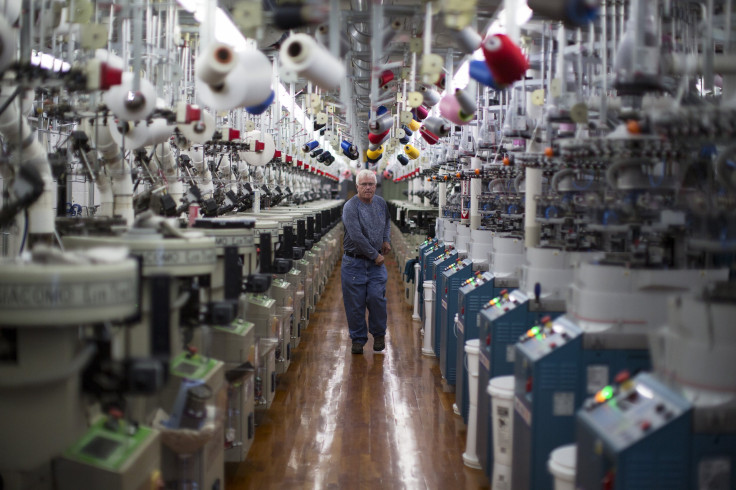January Jobs Report: Wages Are Climbing, But There’s Still A Ways To Go

U.S. employment figures released Friday may have underwhelmed markets, with employers adding 151,000 jobs to payrolls in January — 40,000 jobs short of Wall Street’s expectations. But other metrics should give American workers a reason to be optimistic on wages.
Wage growth strengthened in the past two months, with year-over-year gains in hourly earnings of 2.5 percent in January and a revised 2.7 percent in December. At the same time, an increasing share of discouraged workers entered the workforce, boosting the overall labor force participation rate for the fourth straight month.
All told, the tailwinds behind the American workforce seem to be gathering strength, as steadily diminishing levels of unemployment push employers to boost wages. “I like these numbers,” said Polina Vlasenko, senior fellow at the American Institute for Economic Research. “I would err on the side of thinking they are durable trends.”
But crucial labor market indicators reflect an economy still shaking off the effects of the Great Recession. The 2.5 percent year-over-year wage growth of January outstrips the 2 percent average gains since 2010. But it compares unfavorably with a 20-year average of 3 percent annual wage growth that many Americans innately feel to be normal.
“Wage pressures are still quite tame,” said Deutsche Bank chief economist Joseph LaVorgna Friday. Analysts at Bank of America, meanwhile, noted that the “strong gain in monthly wages seems outsized and is unlikely to be repeated.”
Climbing Out Of A Hole
It's hard not to argue that the recovery has been an impressive one for overall employment, with 13.5 million Americans finding jobs since 2010. The headline unemployment rate has dropped from a 2009 peak of 10 percent to 4.9 percent in January, in line with what Federal Reserve officials consider full employment.
However, the broader unemployment rate — which includes part-time workers who would rather be full-time and those who have given up searching for employment — remains stuck at 9.9 percent.
In previous economic expansions, that sort of job growth brought annual wage gains over 3 percent as employers could no longer draw on a vast pool of cheap reserve labor and began offering higher wages to compensate.
But the current expansion isn’t like previous ones. “There is hidden unemployment, people who have been out of work so long that they are no longer looking,” said Vlasenko. “This hidden pool of unemployed people is what keeps wages from growing, since there is always a way to hire more people without wages going up.”
The overall labor force participation rate — which measures the total size of the working population against the adult population — has declined continuously for 15 years, even through the most recent expansion. In January that metric edged up to 62.7 percent, a modest improvement.
But numerous factors affect the labor force participation rate, most notably the steady retirement of baby boomers. An alternative measure, the prime-age employment-to-population ratio, adjusts for those factors. Measuring the percent of adults aged 25 to 54 years old who are working, the so-called prime-age EPOP gives a telling snapshot of the employment situation for working-age adults.
After stalling around 77.2 percent for most of 2015 — to the consternation of some economists — the prime-age EPOP picked up in the final two months of the year. In January, the measure pushed higher, to 77.7 percent. It’s a positive sign, but the measure remains significantly depressed from pre-recession levels.
A significant chunk of those prime-age adults who aren’t in the workforce consists of would-be workers who have simply given up finding a job. The recession sent the ranks of the discouraged shooting to all-time highs, and although the recovery has seen that population thin out, their numbers remain elevated relative to previous recoveries. In January, 623,000 discouraged adults sat out of the workforce.
The elevated level of discouraged unemployed people is part of the reason why wage growth hasn’t hit levels economists consider healthy. “Wages are still not climbing in the way that they should in an economy delivering a full-employment-sounding unemployment rate of 4.9 percent,” said Andrew Stettner, a senior fellow at the Century Foundation, a liberal think tank.
Still, there are other reasons for hope that wages might see a broader, sustained rise in coming months. Since 2014, an increasing share of people have been moving from the sidelines to the working world.
That trend is especially clear in a measure of workers employed in the most recent month who were previously out of the labor force. According to that metric, people are returning to work ns ever-greater numbers. And the trend accelerated in January, with 5.1 percent of workers previously on the sidelines gaining employment.
“People believe they have better prospects for jobs,” said Vlasenko. “If the economy continues to expand, they will be pushing wages up.”
© Copyright IBTimes 2024. All rights reserved.






















